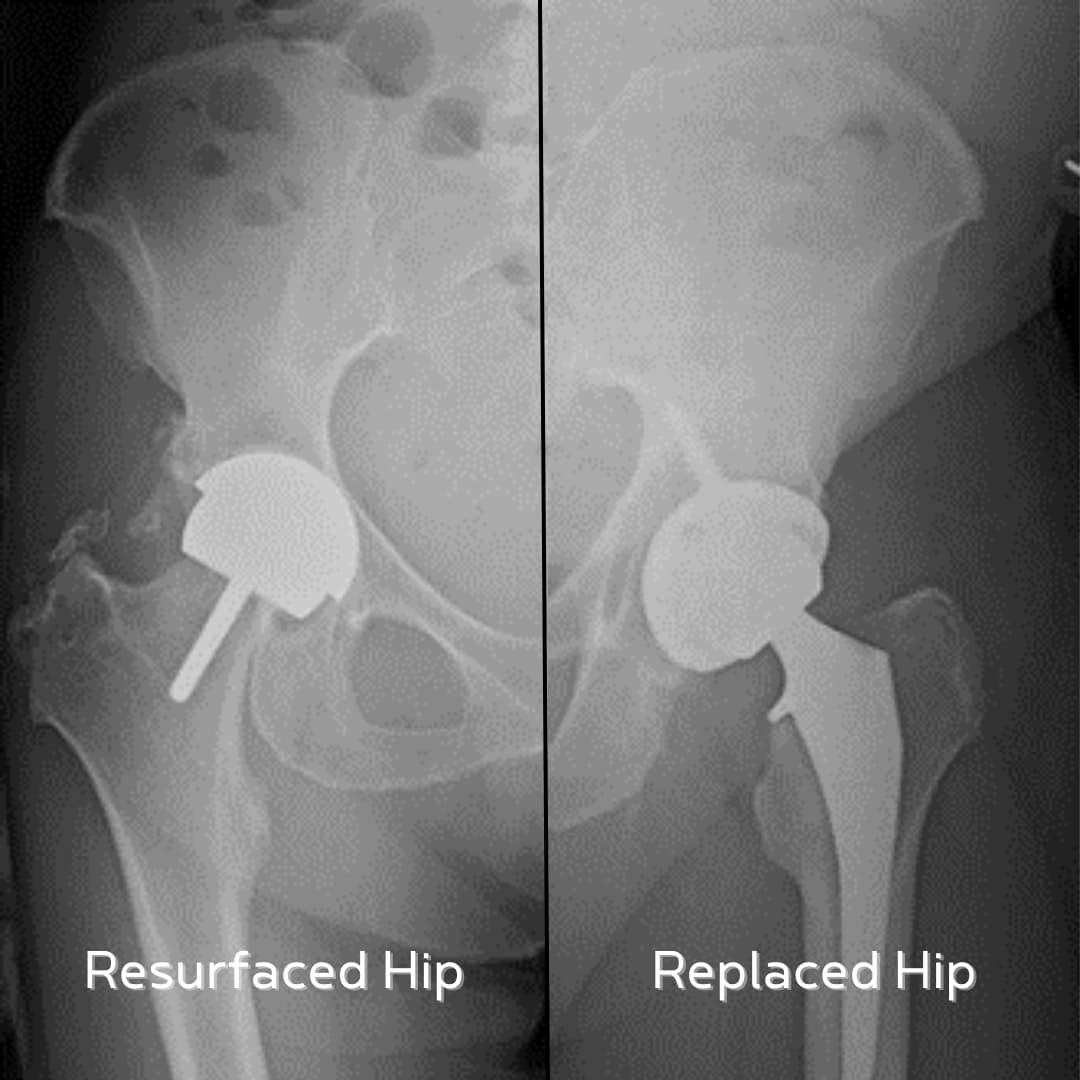Hip pain can severely affect daily life. Walking, exercising, or even sitting for long periods becomes a struggle when arthritis or joint damage sets in. For many patients, surgery becomes the best option to restore mobility and reduce pain.
Two procedures are commonly discussed hip resurfacing and hip replacement. While both aim to relieve discomfort and improve function, they differ in technique, suitability, and long-term outcomes.
This guide explains each procedure in detail, covering benefits, risks, recovery, and who may be the right candidate.
Understanding the Procedures
What Is Hip Resurfacing?
Hip resurfacing is a bone-preserving surgery. Instead of removing the entire femoral head (the ball of the hip joint), the surgeon trims it and caps it with a smooth metal covering. A metal cup is then placed in the hip socket.
This approach keeps more of your natural bone intact, which may make future surgeries easier.
What Is Hip Replacement?
A total hip replacement removes both the damaged femoral head and the socket. They are replaced with artificial parts, often made of metal, ceramic, or high-grade plastic.
This procedure has been performed for decades and is considered one of the most reliable orthopaedic surgeries worldwide.
How Common Are These Surgeries?
Hip surgery is not unusual. According to the Australian Orthopaedic Association National Joint Replacement Registry (AOANJRR), more than 50,000 hip replacements are performed in Australia each year.
Hip replacements remain the most common, but resurfacing still has a role, especially for younger patients with good bone health.
Global data shows that over 90% of hip replacements last 15–20 years, while resurfacing can also provide excellent outcomes in carefully selected patients.
Advantages and Disadvantages
Benefits of Hip Resurfacing
- Preserves more natural bone
- Larger ball size, which may reduce the risk of dislocation
- Often preferred by younger, active patients
- Easier revision surgery if needed in the future
Limitations of Hip Resurfacing
- Not suitable for patients with weak bones or osteoporosis
- Higher risk of metal ion release due to metal-on-metal implants
- Less commonly available, as fewer surgeons perform the procedure
Benefits of Hip Replacement
- Proven long-term success rates
- Suitable for patients of all ages
- Multiple implant materials available (metal, ceramic, plastic)
- Reliable pain relief and improved mobility
Limitations of Hip Replacement
- More bone is removed compared to resurfacing
- Slightly higher risk of dislocation due to smaller prosthetic head
- High-impact sports may be restricted after recovery
Recovery Timelines
After Hip Resurfacing
- Patients often recover faster due to preserved bone structure
- Many can return to normal activities within 3–6 months
- Active patients sometimes resume low-impact sports sooner
After Hip Replacement
- Walking aids are typically needed for 2–6 weeks
- Most patients walk comfortably by 3 months
- Full recovery and return to daily activities usually occur within 6–12 months
Risks to Consider
Both surgeries carry risks, although complications are relatively uncommon:
- Infection (1–2% of cases in Australia)
- Blood clots in the leg (deep vein thrombosis)
- Implant loosening or wear over time
- Differences in leg length
- Metal sensitivity (mainly in resurfacing patients)
A thorough consultation with an orthopaedic specialist is essential to assess and minimize these risks.
Ideal Candidates
Best Candidates for Hip Resurfacing
- Men under 55 years old
- Patients with strong bone density
- Those wishing to maintain an active lifestyle
Not suitable for:
- Women over 50
- Patients with weak bones or osteoporosis
- People allergic to metals
Best Candidates for Hip Replacement
- Older patients with severe arthritis
- Individuals with reduced bone density
- Patients seeking predictable, long-term outcomes
Choosing the Right Option
The decision depends on age, lifestyle, bone health, and long-term expectations.
For younger patients who want to stay highly active, resurfacing may be worth considering. For older patients or those with advanced arthritis, hip replacement often provides the most reliable results.
If you’re unsure which option suits you, consulting with experienced orthopaedic surgeons perth will give you professional guidance tailored to your condition.
Looking Ahead: The Future of Hip Surgery
Advancements in materials and surgical techniques are extending implant lifespans and reducing complication rates. According to registry data, over 95% of hip replacements in Australia remain successful even after 10 years.
These improvements mean patients today can look forward to longer-lasting solutions and improved quality of life.
Conclusion
Both hip resurfacing and hip replacement are highly effective procedures for reducing pain and restoring mobility, but the right choice depends on factors like age, bone health, and lifestyle. While resurfacing may suit younger, active patients with strong bones, total hip replacement remains the most reliable option for long-term success across all age groups. Consulting an experienced surgeon will help you make the best decision for lasting comfort and mobility.


